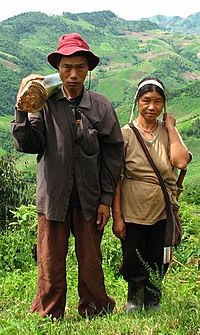
Photo from wikipedia
Seedlings are an important stage for plant populations, as the abundance and rigor of seedlings can indicate a changing forest structure in the future. Studying the different traits of the… Click to show full abstract
Seedlings are an important stage for plant populations, as the abundance and rigor of seedlings can indicate a changing forest structure in the future. Studying the different traits of the seedling can represent how the plant grows. Biomass is one of the traits that can represent the plant’s performance and many other growth processes of the seedling. Several allometric equations have been developed to estimate tree biomass. However, allometric equations for the biomass of seedlings remains poorly studied, especially those from the tropics. The objective of this research is to create and develop a model that can be used to predict the biomass of seedlings, including total biomass, aboveground biomass, and belowground biomass, from root collar diameter, shoot height, main stem length, and wood density from 205 two-year-old seedlings from twenty tree species found in dry evergreen forest in Huai Kha Khaeng Wildlife Sanctuary, Uthai Thani, Thailand. The results showed that the root collar diameter, shoot height, and wood density could be used to create a model to best predict the seedling biomass. This model should be tested with other seedlings in the wild and other datasets to evaluate the performance of the model. To our knowledge, this study is among the first to provide the first allometry for seedlings in tropical dry evergreen forest. The results from this study will allow ecologists to monitor and examine the growth of the seedlings at all stages of life in dynamic tropical environments in the future.
Journal Title: Forests
Year Published: 2023
Link to full text (if available)
Share on Social Media: Sign Up to like & get
recommendations!